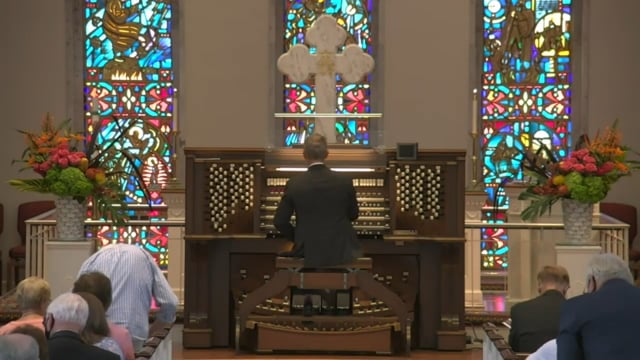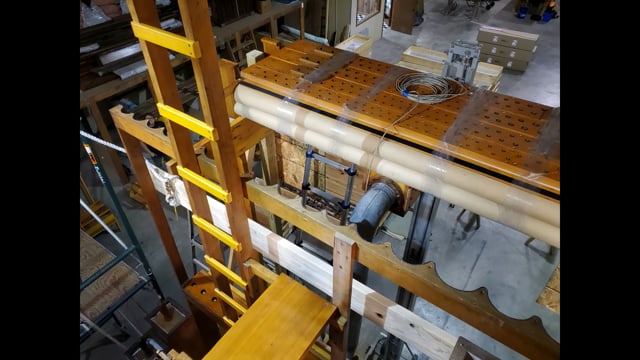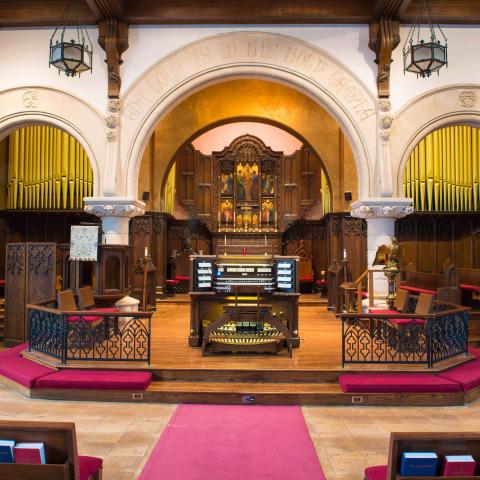
Quimby Pipe Organs, Inc., has completed their Opus 77 for the First United Methodist Church, Athens, Georgia. The four-manual, 68-rank pipe organ was created through the collaboration of Michael Quimby, president and tonal director, and T. Daniel Hancock, former president and designer, Quimby Pipe Organs; James F. Mellichamp, president and professor of music, Piedmont College, Athens, Georgia, consultant; Stephen Mitchell, director of music; and Janis Maxwell, organist.
The instrument is unusual in a number of ways. First, it has four enclosed divisions. Second, the 32′ and 16′ Pedal reed stops and all other manual 16′ reeds are full length. Third, the instrument contains certain features of the symphonic style of organ that were sought after in the late nineteenth and early twentieth centuries. Fourth, departing from the symphonic tradition, each division of the instrument, excluding the Solo, contains a completely developed Diapason chorus. One thing that sets these Diapason chorus ranks apart is the unusual use of substantial metal thicknesses incorporating antimony and trace elements for stability.
Another feature is the chorus of trumpets and orchestral reeds, including the Tuba, French Horn, Oboe, English Horn, and Corno di Bassetto, all voiced by head reed voicer, Eric Johnson. Of particular interest are two contrasting solo reeds, the Tuba in the Solo division and the Hooded Trumpet in the Antiphonal division, voiced on twenty inches wind pressure and ten inches wind pressure, respectively.
Made of solid mahogany, in the Aeolian-Skinner style, with walnut drawknob jambs, coupler rails, and accents, the console incorporates the Virtuoso control system, provided by Integrated Organ Technologies of Alpharetta, Georgia. The solid mahogany case, designed by T. Daniel Hancock, and built by Southern Elegance Custom Cabinetry of Crawford, Georgia, incorporates design features from both the existing grillwork and the sanctuary, achieving an aesthetically elegant display. Located in the twin chancel façades are notes 1–21 of the Great 16′ Double Open Diapason and notes 1–12 of the Pedal 8′ Octave.
Quimby Opus 77 is featured on the cover of the October issue of The Diapason:
https://www.thediapason.com/content/cover-feature-quimby-pipe-organs-first-united-methodist-athens-ga
For information: quimbypipeorgans.com/
See the video of Bradley Welch from the inaugural recital: https://www.thediapason.com/videos/quimby-opus-77-first-united-methodist-church-athens-georgia
Other organ builder news:
Patrick J. Murphy & Associates new organ







